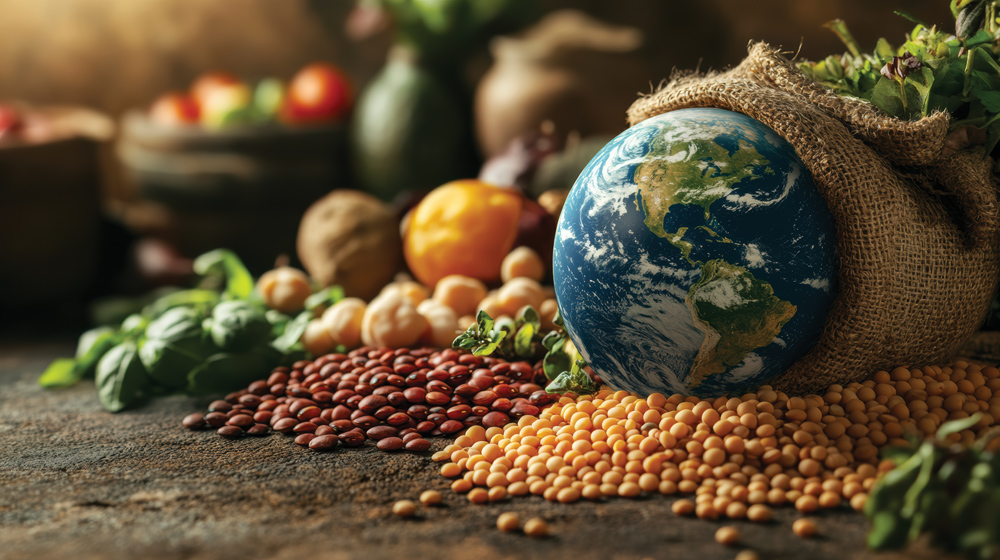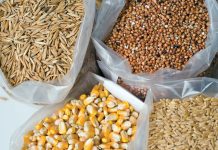Many analysts and observers who have been following global politics have come to a consensus around a few key facts: (a) The Trump administration is seeking to reset the global trading landscape through trade policy interventions that could fundamentally reshape investments, trade patterns, and the global economy as a whole. (b) A consequent retreat of the United States (US) from its wider global geo-economic contribution effectively diminishes its role from a global to a regional superpower. It effectively underscores the shift from a unipolar to a multipolar world.
From a South African perspective, the upheaval of the global geo-economic and political landscape creates heightened uncertainty, which demands a set of interventions that can effectively reduce risk, preserve economic interests, and continue to grow the country’s economy through its export-led strategy. In that sense, the ‘need for export expansion to new markets’ is necessary.
To the careful observer, export diversification is not a new conversation but a discussion that began well before the anticipated higher tariffs in the US market. The motivation for export expansion was based on the projected growth of South Africa’s agricultural output, particularly in fruit, red meat, wine, and grain production, which will require markets that can absorb the expanding exports. Strategically, diversifying exports across different markets helps the sector to reduce the risk of over-reliance on a few dominant markets. The question is: How can South Africa ride the wave of global uncertainty in a multipolar world?
In this article, a few thoughts are presented on how South Africa can begin to navigate the Trump tariffs while enhancing its prospects for growth through export diversification. The article begins with an overview of the structure of South African agricultural exports from an export destination perspective. The following section outlines the new US trade policy and how it creates conditions for a rapid response to export market diversification. The last two sections outline the short-term and long-term strategic considerations in achieving export market diversification as the agricultural sector’s anchor for the country’s export-led strategy.
Background
This export diversification builds on an environment in which South Africa has made significant progress and is now among the world’s key agricultural exporters. In 2024, the country was ranked 32nd with exports totalling $13,7 billion, up 3% from the previous year, according to data from Trade Map. South Africa also imports various agricultural products. In 2024, South Africa’s agricultural imports amounted to $7,6 billion, making the country an exception in Africa as a net exporter of agricultural products, with a surplus that is ever expanding.
From a regional perspective, the African continent maintained the lion’s share of South Africa’s agricultural exports in 2024, accounting for 44% of the total value. The products leading the export list in the African continent were maize, maize meal, wheat, sugar, apples and pears, fruit juices, wine, soybean oil, sunflower oil, oilcake, and rice.
As a collective, Asia and the Middle East were the second-largest agricultural markets, accounting for 21% of the share of overall farm exports in 2024. The exports to this region were mainly citrus, nuts, apples and pears, wool, berries, sugar, beef, mutton, wool, wine, fruit juices, maize, apricots, and peaches.
The European Union (EU) was South Africa’s third-largest agricultural market, with a share of 19%. Citrus, grapes, wine, dates, avocados, pineapples, fruit juices, apples and pears, berries, apricots and cherries, nuts, and wool were amongst the top agricultural products South Africa exported to the EU in 2024. The Americas region accounted for 6% of South Africa’s agricultural exports in 2024. The main exported products include citrus, grapes, wine, fruit juices, and nuts. The rest of the world, including the United Kingdom, accounted for 10% of the exports.
Complications caused by the Trump tariffs
Over the past two and a half decades, South Africa has enjoyed duty-free, quota-free market access into the US under the African Growth Opportunity Act (AGOA) preference program. However, the Trump tariffs abruptly ended AGOA by introducing tariffs that will likely have profound and long-term implications for South Africa and other global markets.
The new tariffs, previously set at 31%, but now temporarily set at 10% for 90 days, present greater urgency to the need for export diversification. This sentiment has resonated with the South African government as the private sector and US importers get to grips with the US decision to increase tariffs on its trading partners.
Reliance on global trade has been pivotal for South Africa’s agricultural sector, which draws much of its growth from an export-led strategy. Agricultural exports are roughly half of the production in value terms. In South Africa’s agricultural exports of $13,7 billion in 2024, the US accounted for 4%. The biggest agricultural exports to the US are citrus, wine, grapes, and nuts. These typically entered the US market duty-free and now fall under the tariff level of 10% and 31%, which Washington has levied on South Africa. However, the latest 90-day tariff pause announced by president Trump, barring the 10% baseline that remains in place, provides a temporary reprieve and room for deeper trade negotiations.
The Minister of International Relations and Cooperation and the Minister of Trade, Industry and Competition said in a joint statement after Washington’s move:
‘Efforts will intensify to diversify export destinations, targeting markets across Africa, as well as in Asia, Europe, the Middle East, and the Americas. Moreover, where deemed appropriate, such efforts will also involve bilateral arrangements that allow for the pursuance of our national interest.’
As a medium to longer-term strategy, this makes sense in the context of the trade friction with the US and the overall growth of South Africa’s agricultural sector. However, export diversification will take time to achieve. New markets take time to open up and develop because negotiations with countries, especially in agricultural products, are complex. For example, it took 16 years for South Africa to reopen Thailand for apple exports.
Moreover, reciprocal trade agreements typically take at least five years to conclude. This means that, in the short term, the South African government will urgently seek to engage with Washington to maintain critical access to the US market and avoid supply chain disruptions. In their joint statement, the two departments managing the fallout said they would be seeking ‘additional exemptions and favourable quota agreements’.
Immediate steps to resolving US issues
Given that establishing a reciprocal trade arrangement is likely to take time, it will be important to establish interim processes and procedures that can resolve immediate challenges.
First, the broader agricultural sector stakeholders – private sector, civil society, labour – can play a constructive role in supporting government’s efforts to engage the US government and its own constituencies by offering data and information that can provide the scope and scale of the impact of the increased US tariff on their exports. Industries such as citrus, grapes, wine, and nuts, among other products, will be critical in providing the impact on incomes, jobs, and supply chains in South Africa as well as the US. Providing both South African and US perspectives on the problem will bring awareness to the Trump administration on the implications of the tariffs on their own jobs, food prices, and consumer welfare.
Second, the government needs to negotiate in earnest the existing tariff and technical barriers and how these can be resolved expediently to establish parity and access to market for US products in South Africa. It will be important to also clarify issues where misconceptions exist, to ensure that the US government understands that existing technical regulations are not meant as barriers but as food health protocols that need to be met to ensure that access is unlocked. Moreover, assessing the reasons why existing market arrangements may be viewed as insufficient is also important. For example, South Africa currently allows US exporters to supply over 70 000 tons of poultry products into the country without any tariff. However, US poultry producers have not been able to meet this quota, with suppliers only using less than 60% of it.
Third – and in the long term – the government, together with its Southern African Customs Union (SACU) and Southern African Development Community (SADC) partners, now need to urgently lay out a framework for a reciprocal trade agreement with the US. It seems, for all practical intent and purpose, that this round of tariffs by the Trump administration signals the end to the US Preference Programs – including GSP and AGOA. South Africa and the rest of the African continent now need to engage the US on a long-term reciprocal trade agreement, which may take years to negotiate, but creates the level of certainty that will attract investments in trade.
A reciprocal trade agreement with the US is no easy feat – unlike any other free trade agreement, an agreement with the US will require hard choices and broad reforms that create free markets and, in some cases, a rethink and departure from the thinking around how to structure industrial incentives and inclusive policies. This is an opportunity for the country to start reimagining the next phase of agro-industrialisation and how to create broad-based competitiveness in ways that will push the boundaries of conventional wisdom.
Long-term trade approach
The approach to resolving the US tariffs imposed on South Africa and the consequent need for reciprocal trade agreements to retain market access to the US, necessitate a much broader discussion around what and how South Africa should approach strategic market diversification. There are three key considerations that ought to frame these discussions, including (a) social partnership dialogues and public-private partnership (PPP) engagements; (b) identifying and prioritising key markets for expansion, including China, the Middle and Far East, and the US; and (c) consolidating and strengthening negotiation for market access through regional blocs, in particular, SACU.
In essence, in the current environment of heightened geopolitical tension, South Africa’s export-oriented agricultural sector must work to maintain the current export markets and broaden to new markets.



















